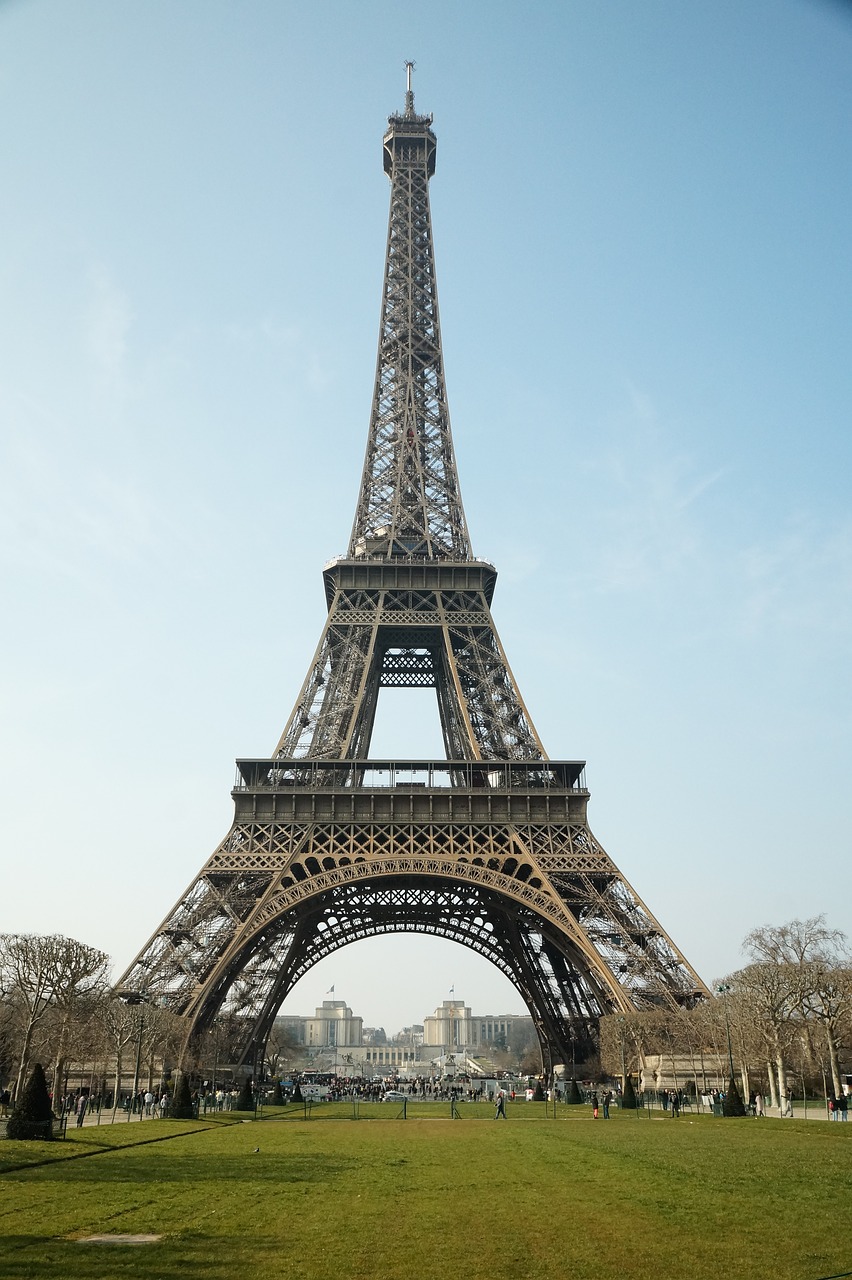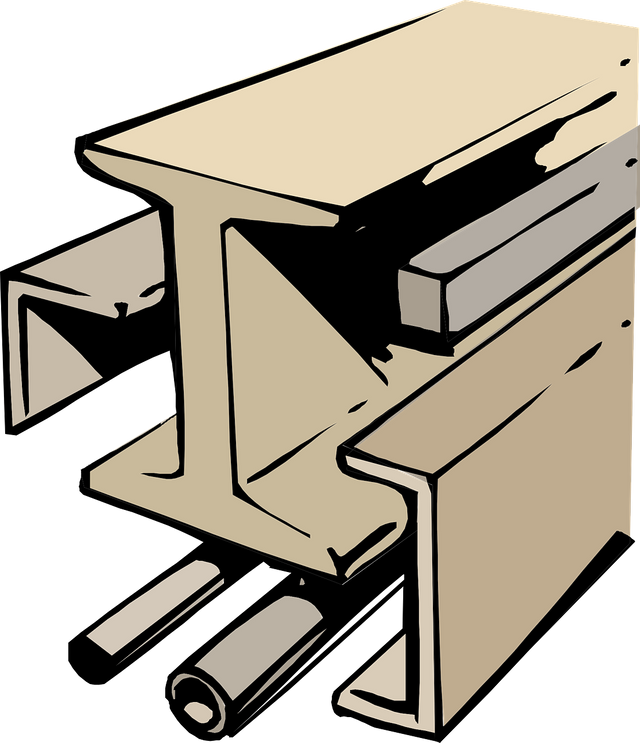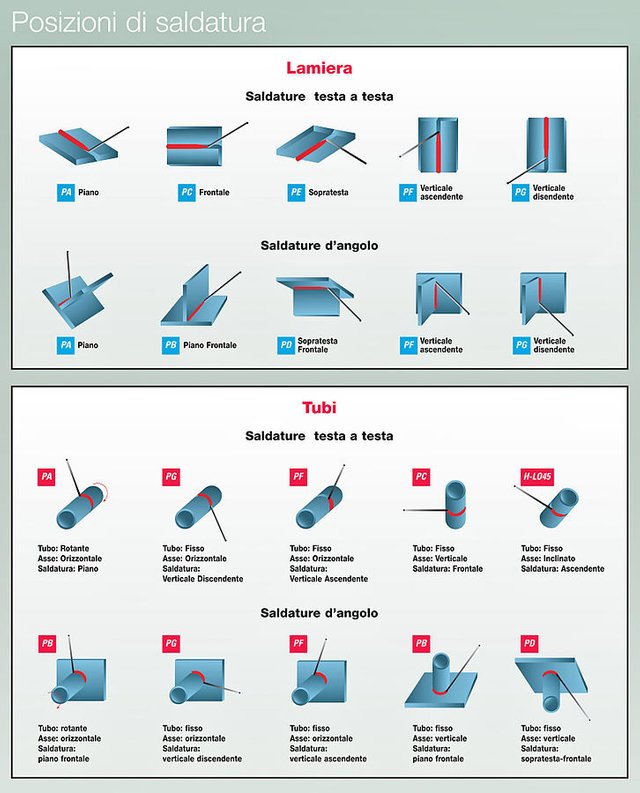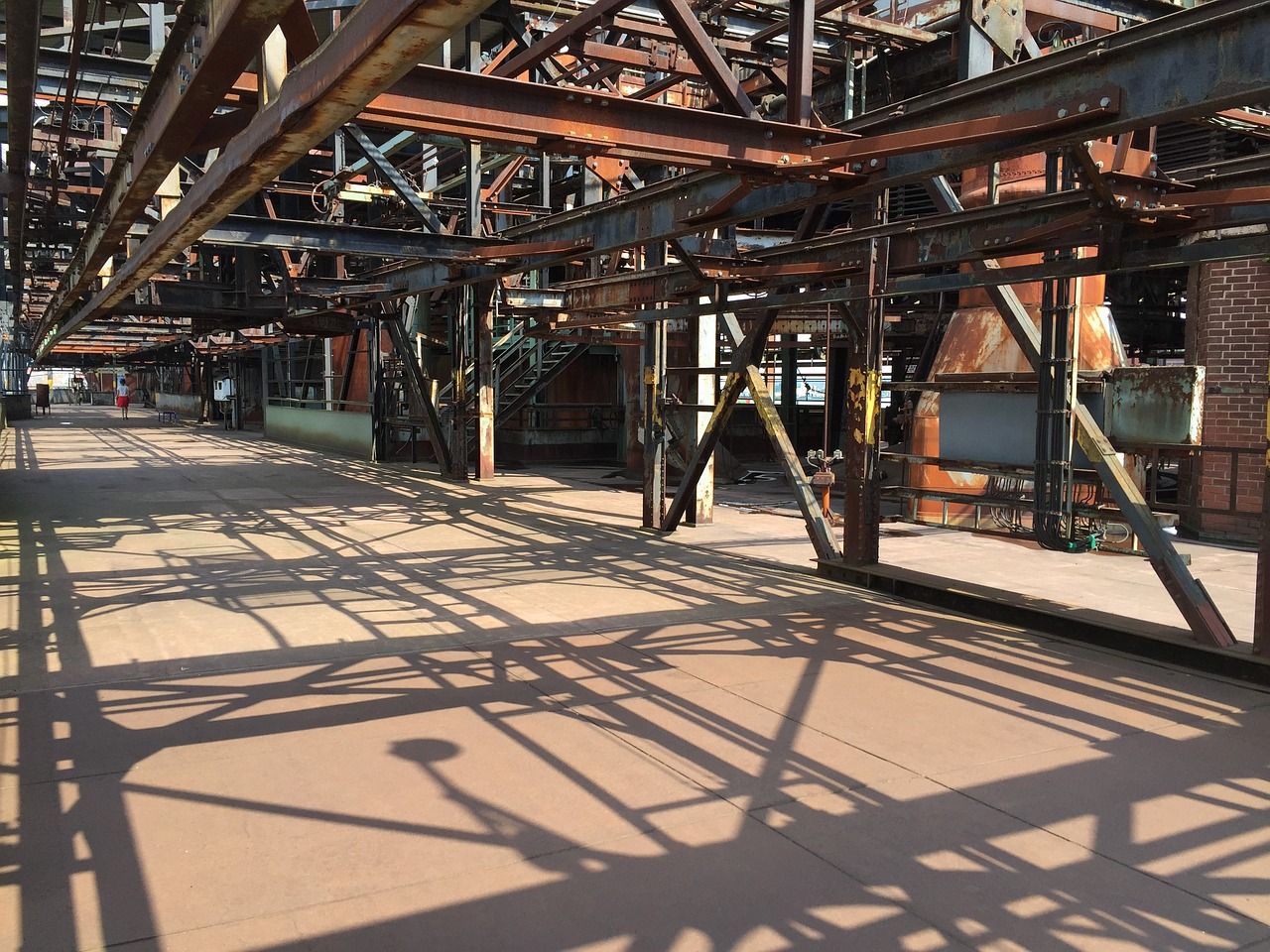I materiali dell'Architettura: I materiali metallici - Sesta Parte// Materials of Architecture: Metallic materials - Sixth Part [ITA - ENG]

CCO Creative Commons Torre Eiffel, Parigi

quest’oggi continueremo a parlare ancora di materiali metallici ma in una veste diversa. Se da un punto di vista storico-evoluzionistico la mia trattazione la posso ritenere conclusa, analogamente a quanto fatto in precedenza col il calcestruzzo armato, ho deciso di fare un piccolo focus, semplice ma esaustivo, sugli aspetti meramente tecnici per l’impiego dell’acciaio, così da dare una giusta conclusione anche a quest’argomento.
Insomma, vedremo quali sono le tecnologie e i principi di base che ci consentono di sfruttare al meglio le caratteristiche estetiche e le proprietà tecniche che i materiali metallici posseggono. Ok, a questo punto potete rilassarvi, dimenticare tutto il resto e perdervi nel mio mondo… buona lettura!

I MATERIALI METALLICI: ASPETTI TECNICO-COSTRUTTIVI
In generale, i metalli sono materiali dotati di compattezza e lucentezza ma la cui caratteristica peculiare è l’elevata conduttività termica ed elettrica. Essendo di norma duttili si prestano facilmente ad essere piegati, laminati o ridotti in fili, senza rompersi. In natura, per la maggior parte, si presentano sotto forma di minerali grezzi.
Abbiamo detto, inoltre, che vi sono due tipologie di metalli: i metalli non ferrosi e quelli ferrosi. Questi ultimi, maggiormente presenti in natura risultano dunque meno costosi ma, pur avendo maggiore resistenza meccanica, sono più soggetti al fenomeno della ruggine.
I metalli non ferrosi, che sono i più costosi, hanno però la caratteristica di tendere a formare uno strato superficiale di ossido, che li protegge dalla ruggine. Questo aspetto, assieme alla buona resa estetica e alla facilità di lavorazione, rende tali metalli particolarmente adatti ad essere impiegati per la produzione di elementi di finitura.
Va precisato che difficilmente i metalli vengono impiegati allo stato puro, si ricorre infatti alla fusione tra due o più metalli ottenendo le cosiddette leghe. Per quanto concerne l’acciaio, ad esempio, si tratta di una lega formata da ferro con minime e ponderate quantità di carbonio.
Tra le varie leghe di ferro, ossia gli acciai, le migliorie che si possono ottenere, rispetto al materiale puro, sono l’aumento della resistenza meccanica e la capacità di formare il famoso strato protettivo di ossido. Il trattamento termico viene utilizzato anche per modificare le caratteristiche delle leghe di alluminio.
La lavorazione delle leghe, intesa sempre con lo scopo di modificarne le caratteristiche, può avvenire anche a freddo: basti pensare, a titolo di esempio, che l’acciaio battuto o laminato modifica la propria struttura divenendo più resistente e leggermente più fragile.
- I processi produttivi dell’acciaio
L’acciaio, grazie alle sue doti di resistenza e rigidità, consente di realizzare strutture di forma slanciata e coperture di grande luce. Un grande vantaggio nella scelta di questo materiale è che, date le sue proprietà, consente processi costruttivi estremamente rapidi.
L’acciaio da costruzione ordinario è detto acciaio dolce, poiché contiene un quantitativo di carbonio pari a meno dello 0,3%. Tale percentuale costituisce un fattore determinante per le caratteristiche del prodotto finito, infatti, quantità eccessive di carbonio rendono il metallo duro ma fragile mentre quantità insufficienti lo rendono troppo tenero e di scarsa resistenza meccanica. Per questo motivo il contenuto di carbonio va commisurato al fine di ottenere un materiale che risponda in maniera ottimale alle esigenze costruttive.
La produzione avviene in un altoforno caricato con strati alternati di minerali di ferro, coke e calcare frantumato. Al termine di questo processo viene estratta, dalla parte inferiore del forno, la ghisa, che viene mantenuta allo stato fuso per poi essere trasformata in acciaio.
Il processo di lavorazione dell’acciaio, che dura in totale meno di un’ora, viene accompagnato da una serie di esami approfonditi e da prove di laboratorio su campioni di materiale, in maniera da garantire la massima qualità del prodotto.
L’acciaio fuso può essere colato in stampi per la produzione dei lingotti o, in alternativa, può essere trasformato, mediante colata continua, in blumi o bramme, anch’essi destinati alla trasformazione in prodotti finiti.
I profilati da costruzione si distinguono in:
-profilati a doppia T, che sostituiscono i vecchi profilati ad I e vengono usati come travi o pilastri;
-profilati a L, che risultano estremamente versatili, infatti vengono usati come travi di lunghezza ridotta per piccoli carichi, per controventature o come componenti delle travature reticolari.
-profilati ad U, anch’essi impiegati nelle travature reticolari, come elementi di controventamento e come travi e architravi di luce ridotta.
Un particolare tipo di travature reticolari sono le cosiddette travature reticolari leggere, che sono tra i più diffusi elementi prefabbricati prodotti con laminati d’acciaio e trovano impiego per le orditure dei solai e delle coperture.

CCO Creative Commons Esempi di pofilati
- La lavorazione
I processi di lavorazione cui l’acciaio può essere sottoposto sono:
-laminazione;
-estrusione;
-fucinatura;
-limbitura;
-trafilatura.
Altri tipi di lavorazione, il cui obiettivo è l’asportazione di parte del materiale, vengono fatti con apposite macchine utensili e sono:
-fresatura;
-tornitura;
-foratura;
-filettatura;
-tagliatura;
-punzonatura.
Le superfici dei metalli vengono, inoltre, spianate e rifinite mediante processi di rettifica e levigatura.
- Sistemi di connessione di elementi metallici
In linea di principio le connessioni tra componenti metallici possono avvenire o meccanicamente o per mezzo della fusione del materiale. Le connessioni meccaniche richiedono la foratura o la punzonatura del metallo, così da permettere l’impiego di elementi di collegamenti quali viti, bulloni e chiodi. Per le unioni di lamiere sono talvolta usate viti autofilettanti. In particolare nel caso di coperture, gli elementi in lamiera vengono spesso collegati mediante giunzioni ad aggraffatura.
Per ottenere strutture metalliche complesse, si realizzano dei sistemi di connessione degli elementi in acciaio, che possono avvenire o a caldo o a freddo. Appartengono al primo caso:
-la chiodatura, pratica che oggi è praticamente abbandonata a causa dell’eccessiva manodopera in confronto agli altri sistemi;
-la saldatura, la cui peculiare caratteristica è che gli elementi così collegati, strutturalmente si comportano come un insieme monolitico che rispetto alla bullonatura, che può offrire simili prestazioni, garantisce maggiore affidabilità. Particolare tipo di saldatura è la saldatura ad arco elettrico, destinata all’unione di tubi per impianti elettrici, ringhiere, cancellate e simili.
Si definisce invece unione a freddo la bullonatura, che avviene per mezzo di viti o bulloni, caratterizzata dalla verifica dell’applicazione della giusta tensione a tutti i bulloni della connessione.
- Protezione dei materiali metallici messi in opera
In ultima analisi vediamo come vengono protetti i metalli una volta messi in opera. Il fenomeno negativo a cui questo tipo di materiali sono sottoposti è la corrosione, definita come l’attacco chimico di un materiale da parte dell’ambiente con conseguente deterioramento delle sue proprietà.
Nel caso dell’acciaio si forma la ruggine, che costituisce il maggior pericolo per le strutture realizzate con questo tipo di materiale poiché lo strato di ruggine tende a staccarsi dalla superficie metallica, che dunque rimane esposta alla successiva ossidazione fino al completo deteriorarsi del materiale.
Per prevenire questo tipo di degrado le superfici metalliche vengono sottoposte prima a processi di preparazione e, successivamente, poste a trattamenti protettivi, che sono costituiti da vernici o da particolari rivestimenti.

Bene signori lettori, anche quest’avventura è giunta al termine, al solito mi auguro che abbiate gradito e comunque vi ringrazio per il tempo dedicatomi. Adesso non mi resta che darvi appuntamento per la prossima avventura ma, almeno per oggi, ci salutiamo qui. Vi abbraccio tutti!
L'Ego dice: "Quando ogni cosa andrà a posto troverò la pace".
Lo Spirito dice: "Trova la pace e ogni cosa andrà a posto".

CCO Creative Commons Tipi di saldatura

today we will continue to talk about metal materials but in a different guise. If from an historical-evolutionistic point of view my treatment can be considered as completed, similarly to what was done previously with the reinforced concrete, I decided to make a small, simple but exhaustive focus on the merely technical aspects for the use of steel, so as to give a right conclusion to this topic.
In short, we will see what are the technologies and basic principles that allow us to make the most of the aesthetic characteristics and the technical properties that metallic materials possess. Ok, at this point you can relax, forget all the rest and get lost in my world... good reading!

THE METALLIC MATERIALS: TECHNICAL-CONSTRUCTION ASPECTS
In general, metals are materials with compactness and brightness but whose peculiar characteristic is the high thermal and electrical conductivity. Being normally ductile they are easily liable to be bent, rolled or reduced into wires, without breaking. In nature, for the most part, they come in the form of raw minerals.
We have also said that there are two types of metals: non-ferrous metals and ferrous metals. The latter, which are more present in nature, are therefore less expensive but, although having greater mechanical resistance, are more susceptible to the phenomenon of rust.
Non-ferrous metals, which are the most expensive, however, have the characteristic of tending to form a surface layer of oxide, which protects them from rust. This aspect, together with the good aesthetic yield and ease of processing, makes these metals particularly suitable for use in the production of finishing elements.
It should be noted that metals are rarely used in their pure state, in fact they are used to merge two or more metals to obtain the so-called alloys. As for steel, for example, it is an alloy made of iron with minimal and weighted amounts of carbon.
Among the various alloys of iron, that is the steels, the improvements that can be obtained, with respect to the pure material, are the increase of the mechanical resistance and the ability to form the famous protective layer of oxide. The heat treatment is also used to modify the characteristics of the aluminum alloys.
The processing of alloys, always intended to change their characteristics, can also take place in cold weather: just think, by way of example, that the beaten or laminated steel modifies its structure becoming more resistant and slightly more fragile.
- The production processes of steel
The steel, thanks to its qualities of strength and rigidity, allows to realize structures with a slender shape and large light coverings. A great advantage in choosing this material is that, given its properties, it allows extremely rapid construction processes.
The ordinary construction steel is called soft steel, since it contains a carbon amount of less than 0.3%. This percentage is a determining factor for the characteristics of the finished product, in fact, excessive amounts of carbon make the metal hard but fragile while insufficient quantities make it too soft and of poor mechanical resistance. For this reason the carbon content must be commensurate in order to obtain a material that responds optimally to construction requirements.
Production takes place in a blast furnace loaded with alternating layers of iron ore, coke and crushed limestone. At the end of this process, the cast iron is extracted from the lower part of the furnace, which is kept in the molten state and then transformed into steel.
The steel working process, which lasts less than an hour in total, is accompanied by a series of in-depth tests and laboratory tests on material samples, in order to guarantee the highest quality of the product.
The molten steel can be poured into molds for the production of ingots or, alternatively, it can be transformed, by continuous casting, into blooms or slabs, which are also intended for processing into finished products.
Construction profiles are distinguished in:
-double T-shaped profiles, which replace the old I-sections and are used as beams or pillars;
-L profiles, which are extremely versatile, in fact they are used as beams of reduced length for small loads, for bracing or as components of the trusses;
-U-shaped profiles, also used in the trusses, as bracing elements and as beams and architraves of reduced light.
A particular type of reticular trusses are the so-called light reticular trusses, which are among the most widespread prefabricated elements produced with rolled steel and are used for the warping of floors and roofs.
- Processing
The processing processes to which the steel can be subjected are:
-lamination;
-extrusion;
-forging;
-limbitura;
-drawing.
Other types of processing, whose objective is the removal of part of the material, are made with special machine tools and are:
-milling;
-turning;
-drilling;
-thread;
-cutting;
-punching.
The surfaces of the metals are, furthermore, flattened and finished by means of rectification processes and sanding.
- Connection systems for metallic elements
In principle, the connections between metal components can occur either mechanically or by melting the material. The mechanical connections require the drilling or punching of the metal, so as to allow the use of connecting elements such as screws, bolts and nails. Self-tapping screws are sometimes used for joining sheet metal. In particular in the case of roofing, the sheet elements are often connected by crimping joints.
In order to obtain complex metallic structures, connection systems are made of the steel elements, which can be either hot or cold. They belong to the first case:
-the nailing, a practice that today is practically abandoned due to the excessive labor compared to the other systems;
-the welding, whose peculiar characteristic is that the elements thus connected, structurally behave as a monolithic unit which, compared to the bolting, which can offer similar performances, guarantees greater reliability. A particular type of welding is electric arc welding, intended for joining pipes for electrical systems, railings, gates and the like.
Instead, cold bolting is defined as bolting, which occurs by means of screws or bolts, characterized by the verification of the application of the correct tension to all the connection bolts.
- Protection of the metallic materials installed
Ultimately, we look at how metals are protected once they are put in place. The negative phenomenon to which this type of material is subjected is the corrosion, defined as the chemical attack of a material by the environment with consequent deterioration of its properties.
In the case of steel, rust is formed, which is the greatest danger for structures made with this type of material since the rust layer tends to detach from the metal surface, which therefore remains exposed to subsequent oxidation until the material deteriorates completely.
To prevent this type of deterioration, the metal surfaces are first subjected to preparation processes and, subsequently, placed on protective treatments, which consist of paints or special coatings.

Well gentlemen readers, this adventure has come to an end, as usual I hope you enjoyed and anyway thank you for the time dedicated to me. Now I just have to give you an appointment for the next adventure but, at least for today, we say hello here. I embrace you all!
The ego says: "When everything goes right I will find peace"
The Spirit says: "Find peace and everything will fall into place"

CCO Creative Commons Esempio di struttura arrugginita
Le mie fonti...
-Appunti delle lezioni e dei seminari universitari
-La collana di libri di G.K.Koening-F.Brunetti, Corso di Tecnologia delle Costruzioni , Le Monnier
-Bernardo Marchese, Tecnologia dei materiali e chimica applicata, Liguori Editore
-Edward Allen, I fondamenti del costruire, Mc Graw-Hill
Post lunghi ma sempre interessanti.
Complimenti
Congratulations @mrgreg! You have completed some achievement on Steemit and have been rewarded with new badge(s) :
Click on any badge to view your own Board of Honor on SteemitBoard.
For more information about SteemitBoard, click here
If you no longer want to receive notifications, reply to this comment with the word
STOP